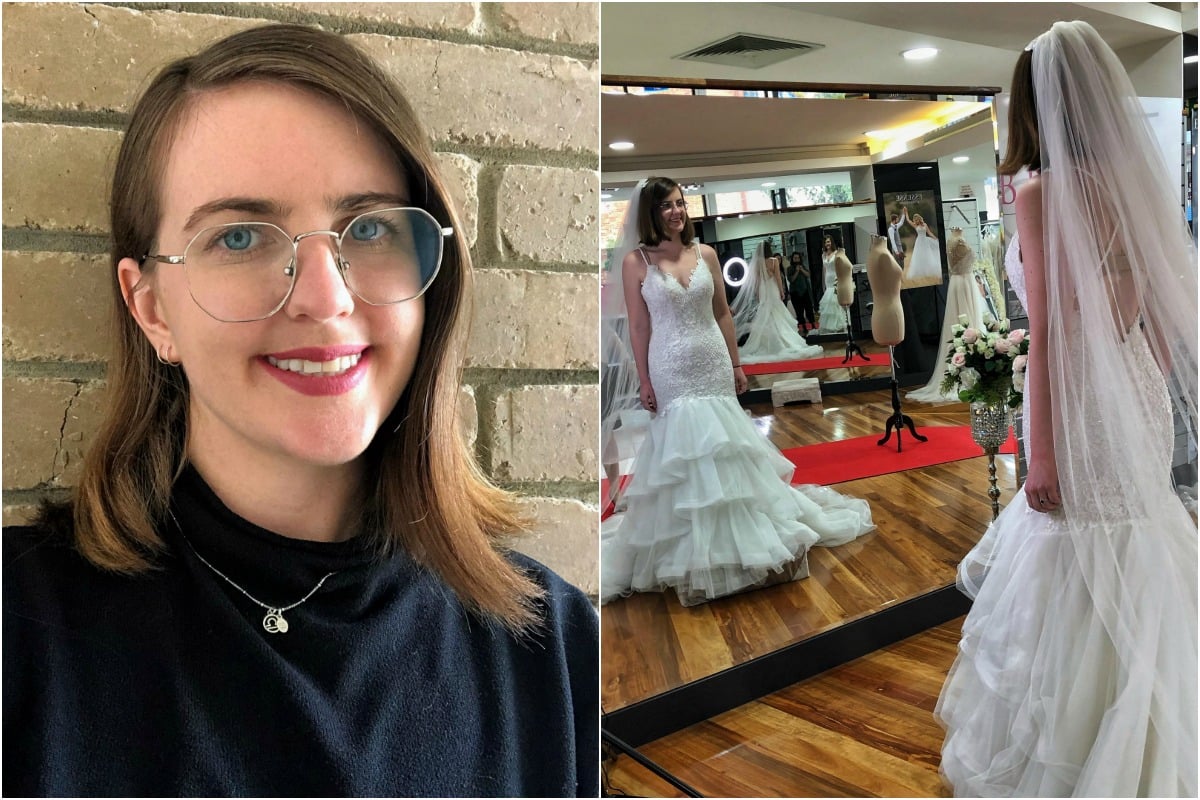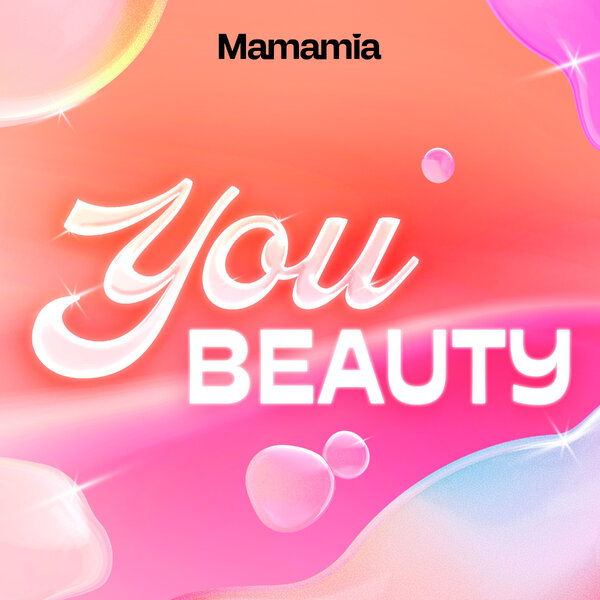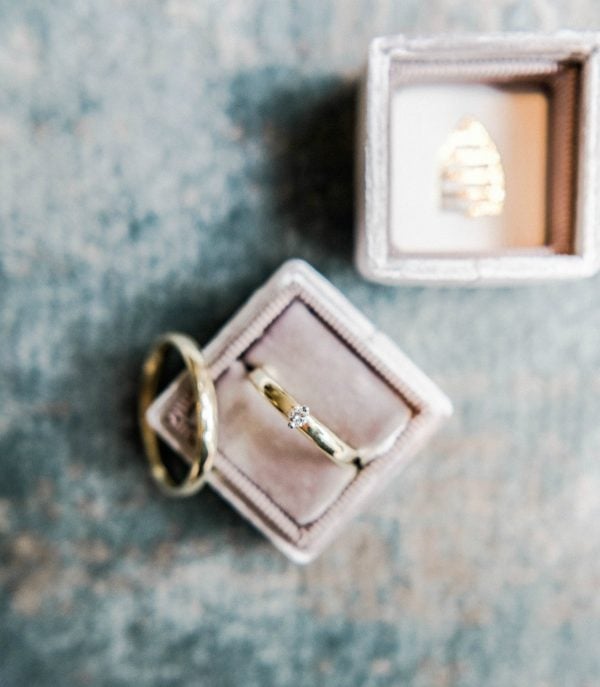
Standing on a small crate with red carpet glued to it, holding a bouquet of plastic roses, draped in a two-metre-long veil and wearing a dress that costs more money than my bank account contains, a feeling I never expected comes over me.
I feel like a bride.
Has the room gone silent or have I lost the ability to hear as I stare at myself in the mirror? It seems like the kind of moment where speaking would be inappropriate, the moment all little girls dream of growing up. Or, at least, the moment all little girls are told to dream of.
Psst! On our You Beauty podcast, host Kelly McCarren shares all the products she used to do her own wedding makeup. Post continues below.
Marriage has always felt like an expectation: at some point in your late-20s or early-30s you get married, and a few years later you start producing offspring.
The average cost of an Australian wedding currently is around $50,000. That’s a hefty price tag for a paper signing ceremony.
Of course, this price can be drastically reduced. As I twirl in my $3,600 dress to show off all the different angles to my two-person entourage, I am fully aware of the op shop around the corner where I could find a white dress for under $10. Hell, I’ve been hitting the gym recently – I’m sure I could squeeze into the midnight-blue dress I wore to my year 12 ball.
That would never do though, because wedding dresses have to be white, they have to be the latest fashion, they have to be extravagant. In other words, they have to be expensive. But… why?



Top Comments
How much energy was wasted finding reasons to be negative. The only hood part of this article was Shae
This article misses the mark in every way. You can be a feminist and completely non -traditional in your approach to a wedding and still understand why you are doing it? No mention of love or sentiment in this article it is cynical and really trashes the industry. An industry that is full of choice and options and varying budgets. No one forces anyone to spend 50k and yes that is the average wedding value but there is a huge rise in elopements and micro-weddings and CHOICE. I have never heard anyone say they "don't know" when it comes to why they are investing in their day of course they do and they have their Pinterest board and Instagram to back it up. As a self labeled "true millennial" you should know that this particular generation has everything at their finger tips research wise, they know what they want, they know how much they want to spend and as a rule tradition is out the window. A lot of them also pay for their own weddings and save like demons to be able to get that dress you have just trashed them for wanting and just so you know 2.5k on a dress is cheap!! Sorry this article is just off. I am 100% all for humans that do not wish to get married ... in fact I love it - be you I say!! Just don't be a self appointed expert like Emily.
I kind of feel like the folks getting married today are probably the *least* likely to follow all these 'outdated' traditions. As you say, they know what their options are, and there seems to be much more focus in having a wedding that really reflects the personality of the couple - while still incorporating the parts they want to keep.